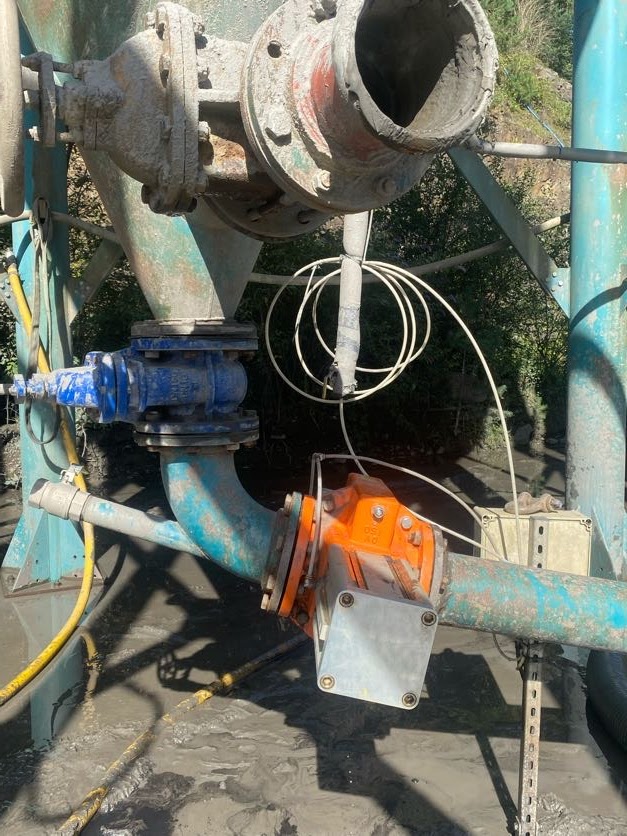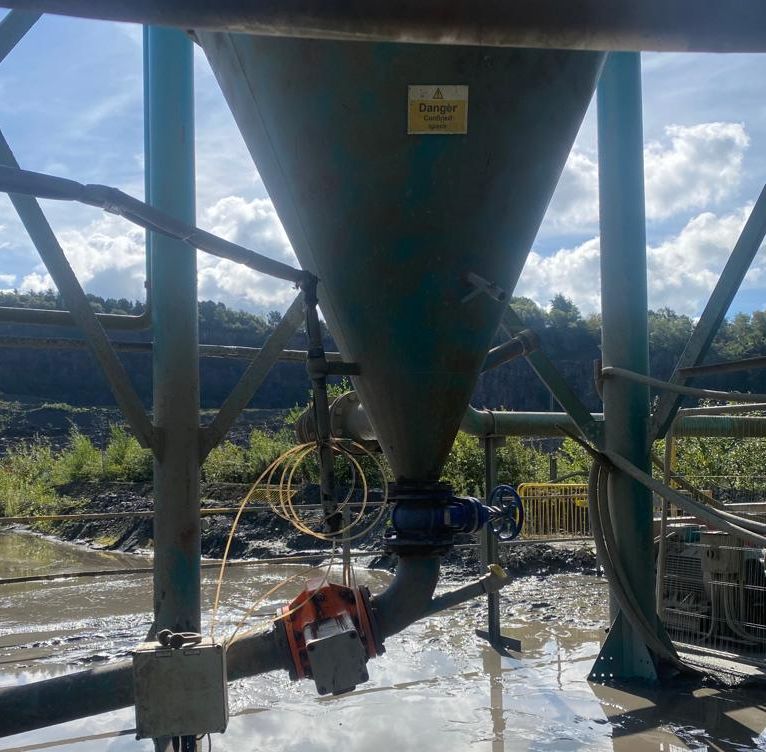Valve for Sandstone Application
Blue pennant sandstone and silica below 63 microns are in a fluid but thickened state, passing through the OV type Pinch Valve installed on this quarry site, at ambient temperature. The fail safe mechanical valve is held normally spring closed, requiring air to open.
Positioned at the base of the tank, the valve performs approx 10-20 cycles per day.
The valve for sandstone was fitted to the plant when it was originally designed by the installers, and the quarry team have continued to use it ever since. The Quarry Manager told us:
“The Pinch Valve works well within this application. A normal steel valve would wear out in no time due to the highly abrasive materials.”

Pinch Valve used within this application: OV150.03.30.PA2
OV model, air operated, fail safe (normally closed), aluminium body, aluminium flanges PN10/16, natural rubber sleeve.
Abrasive Media Handled with Ease
Welsh Blue Pennant sandstone is extremely hardwearing. Predominantly blue to grey in colour with occasional iron and coal markings, it is particularly suited to exterior use. Being such a hard material makes pennant sandstone an extremely abrasive media, especially mixed with silica, but the combined media is handled by the Pinch Valve with ease.
Solenoid valves are used in conjunction with this Pinch Valve for sandstone.
Wear on the Valve for Sandstone
The media does seem to wear the flange ends of the internal rubber sleeve slightly, which is replaced at around 12 month intervals. The wear on the sleeve is to be expected as the sleeve is the only wearable part of the valve. However, the lifetime of the sleeve is dependent on the application – the coarseness of the media, the amount of pressure used to convey it, and how often the valve is used. Given that the sleeve inside this valve for sandstone is replaced approx every 12 months, it is a good timescale.




